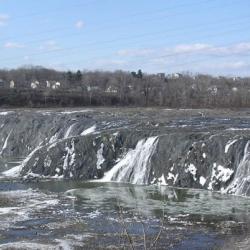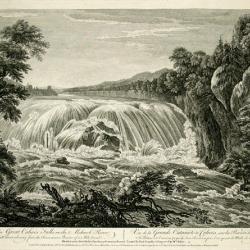Cohoes Falls
Cohoes Falls is the second largest waterfall in New York State, measuring roughly 1,000 feet across and up to 90 feet high. Located on the Mohawk river, a major waterway in the north west of the state of New York, the falls is shared by the city of Cohoes and the town of Waterford, New York.
Discovered by the indigenous Mohawk tribe, the falls were originally named " Ga-ha-oose", meaning "the place of the falling canoe". There is even a legend surrounding the falls which tells of a chief's daughter who fell asleep in her canoe and drifted over the falls.
The falls were first sighted by European explorers and colonists in the mid 17th century and were considered one of the most famous natural phenomenon in America, especially since at that time, Niagara Falls remained accessible only to fur traders.
Geological Features
The falls are approximately 70 feet high and it is estimated that they discharge, on average, 27,000 cubic feet of water per second. Its flow is most impressive in springtime when it can sometimes run at 90,000 cubic feet (2,500 m3) of water per second. The glacial advances and retreats of the last two million years of geologic history altered New York's landscape. Erosion and deposits left by the retreating glaciers changed the course of the lower Mohawk River and formed Cohoes Falls.
NY
United States





